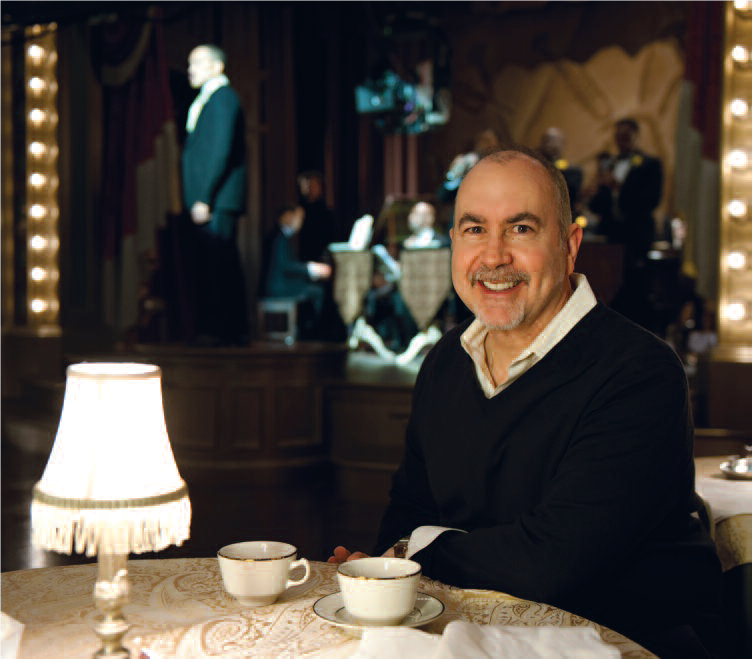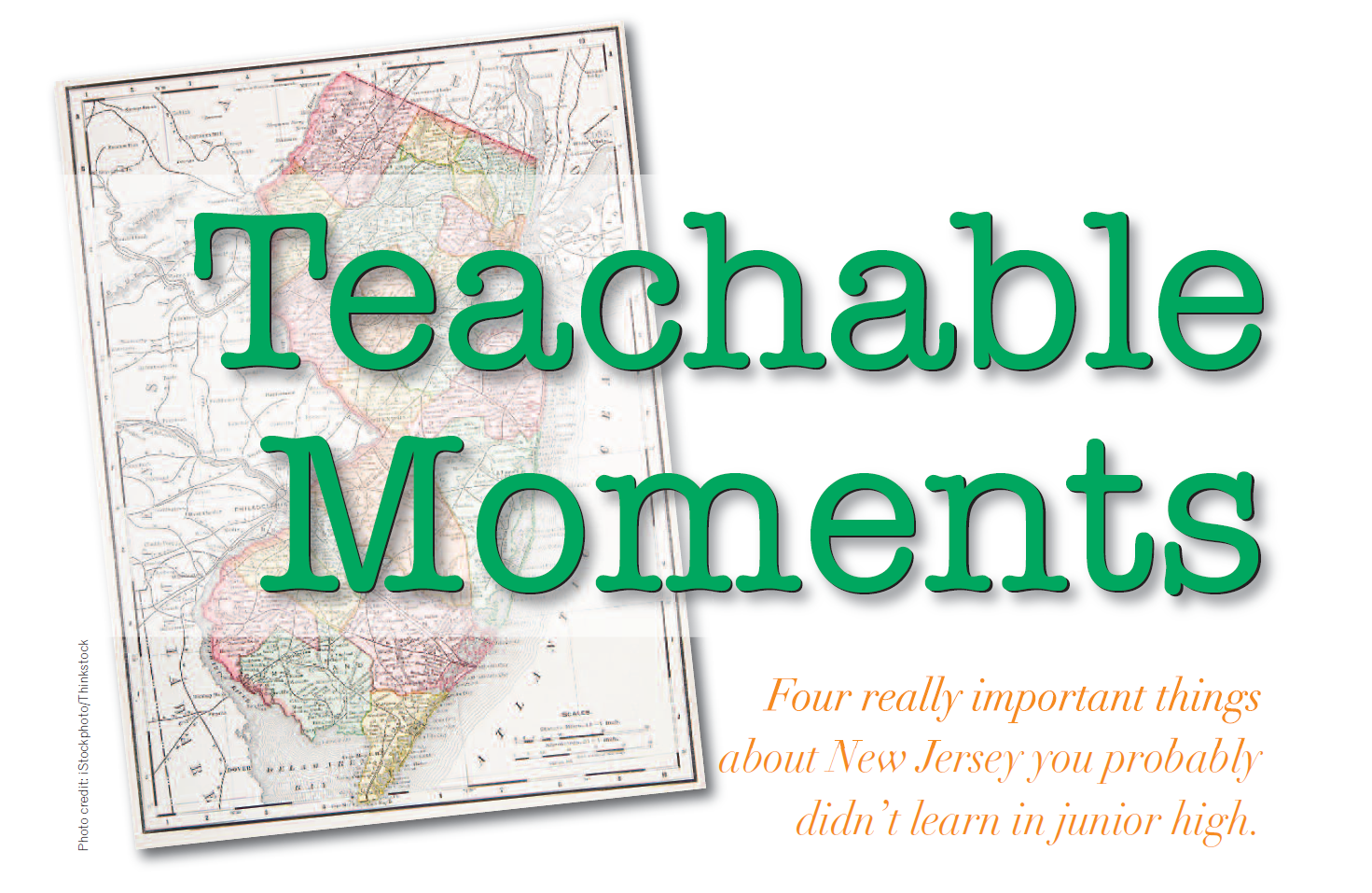News, views and insights on maintaining a healthy edge.
 Painkiller Overdoses Spiking Among Women A new report from the Centers for Disease Control offers some eye-opening facts on the abuse of painkillers among women. Since 1999, the number of women who have died from a painkiller overdose has increased by a factor of four. “Mothers, wives, sisters, and daughters are dying at rates that we have never seen before,” says Dr. Thomas Frieden, Director of the CDC. Among the more alarming aspects of the report are: 1) On average, 18 women die
Painkiller Overdoses Spiking Among Women A new report from the Centers for Disease Control offers some eye-opening facts on the abuse of painkillers among women. Since 1999, the number of women who have died from a painkiller overdose has increased by a factor of four. “Mothers, wives, sisters, and daughters are dying at rates that we have never seen before,” says Dr. Thomas Frieden, Director of the CDC. Among the more alarming aspects of the report are: 1) On average, 18 women die  from painkiller overdoses in the U.S. every day; 2) More women die from prescription drug overdoses than from car accidents; 3) Some 50,000 women between the ages of 25 and 34 will be taken to U.S. emergency rooms as a result of painkiller overdoses this year. In its report, the CDC recommended that healthcare providers exercise greater caution when prescribing prescription medications—and suggested that states and the federal government could turn this trend around by doing a better job educating women on the dangers of prescription painkillers. “We are seeing an increase in the numbers of women and young people presenting in the emergency room with prescription pain and anxiety medications—many of whom have legitimate prescriptions for a physical or mental health disorder, and others who are accessing prescription meds from others or on the street,” Lisa Dressner confirms. Dressner is Program Director of TRMC’s Psychiatric Emergency Services. “Too often, alternatives to these highly addictive medications are not explored, and primary care or pain management doctors may not fully assess someone’s potential or history of substance abuse.” There is an urgent need, she adds, for more education to consumers around the potential for addiction to commonly prescribed pain meds, and medications for problems related to anxiety or sleep, so that risk for abuse of these medications, and increased depression, withdrawal and suicidality is minimized.
from painkiller overdoses in the U.S. every day; 2) More women die from prescription drug overdoses than from car accidents; 3) Some 50,000 women between the ages of 25 and 34 will be taken to U.S. emergency rooms as a result of painkiller overdoses this year. In its report, the CDC recommended that healthcare providers exercise greater caution when prescribing prescription medications—and suggested that states and the federal government could turn this trend around by doing a better job educating women on the dangers of prescription painkillers. “We are seeing an increase in the numbers of women and young people presenting in the emergency room with prescription pain and anxiety medications—many of whom have legitimate prescriptions for a physical or mental health disorder, and others who are accessing prescription meds from others or on the street,” Lisa Dressner confirms. Dressner is Program Director of TRMC’s Psychiatric Emergency Services. “Too often, alternatives to these highly addictive medications are not explored, and primary care or pain management doctors may not fully assess someone’s potential or history of substance abuse.” There is an urgent need, she adds, for more education to consumers around the potential for addiction to commonly prescribed pain meds, and medications for problems related to anxiety or sleep, so that risk for abuse of these medications, and increased depression, withdrawal and suicidality is minimized.
Lisa Dressner Program Director of TRMC’s Psychiatric Emergency Services 908.994.7152
Good News on HPV Virus Michele Bachman can rest easy. The HPV vaccine does not make young women “mentally retarded.” In fact, according to a report released by the Centers for Disease Control in June, the prevalence of Human Papilloma Virus (HPV) infections has been cut in half since 2006. The Journal of Infectious Diseases reported that researchers were surprised by this result—not because of the vaccine’s effectiveness, but because the rate of vaccination in the U.S. lags far behind  other developed countries. Only a third of American girls have been fully vaccinated; in other countries (including Rwanda!) the rate is closer to 80 percent. HPV causes 19,000 cases of cancer among women in the U.S. each year. It also accounts for 8,000 cases in men, a statistic brought to light by actor Michael Douglas, whose throat cancer was identified as being HPV-related. “The study showed that less than four years later the prevalence of the vaccine strains among young women aged 14–19 years had fallen by 56%,” points out Dr. William Farrer, Associate Program Director and Associate Professor of Medicine of the Seton Hall University School of Health and Medical Sciences at TRMC. “This was despite the fact that in 2010, only 32% of 13–17 year-olds had received the full 3-dose series of vaccine. Rates of HPV infection in older women had not fallen, probably reflecting the fact that they were not the target group for the vaccine.The researchers also reported that ‘Sexual behavior among females aged 14–19 years overall was similar in the two periods.’ This should reassure opponents of the HPV vaccine who expressed concern that somehow use of the vaccine would encourage promiscuity.”
other developed countries. Only a third of American girls have been fully vaccinated; in other countries (including Rwanda!) the rate is closer to 80 percent. HPV causes 19,000 cases of cancer among women in the U.S. each year. It also accounts for 8,000 cases in men, a statistic brought to light by actor Michael Douglas, whose throat cancer was identified as being HPV-related. “The study showed that less than four years later the prevalence of the vaccine strains among young women aged 14–19 years had fallen by 56%,” points out Dr. William Farrer, Associate Program Director and Associate Professor of Medicine of the Seton Hall University School of Health and Medical Sciences at TRMC. “This was despite the fact that in 2010, only 32% of 13–17 year-olds had received the full 3-dose series of vaccine. Rates of HPV infection in older women had not fallen, probably reflecting the fact that they were not the target group for the vaccine.The researchers also reported that ‘Sexual behavior among females aged 14–19 years overall was similar in the two periods.’ This should reassure opponents of the HPV vaccine who expressed concern that somehow use of the vaccine would encourage promiscuity.”
William Farrer, MD Department of Medicine, Infectious Diseases Division 908.994.5455
 Air Pollution Linked to Sleep Disorders in Children While we watch the Arab Spring unfold in Egypt in dramatic fashion, some dramatic health news has come out of that country that is relevant right here in New Jersey. In July, University of Cairo researchers announced the results of sleep study on school-age children, which shows a link between air pollution and sleep disorders. The 276 children in the study exhibited significant disorders of initiating and maintaining sleep, and excessive
Air Pollution Linked to Sleep Disorders in Children While we watch the Arab Spring unfold in Egypt in dramatic fashion, some dramatic health news has come out of that country that is relevant right here in New Jersey. In July, University of Cairo researchers announced the results of sleep study on school-age children, which shows a link between air pollution and sleep disorders. The 276 children in the study exhibited significant disorders of initiating and maintaining sleep, and excessive  somnolence when exposed to PM10 (particulate matter smaller than 10 micrometers) in the air. PM10 particles can settle in the lungs and cause health problems. Larger particles are typically filtered by the nose and throat. In treating the pediatric population at the Trinitas Comprehensive Sleep Disorders Center, Vipin Garg, MD, Director of the Center notes that, “Small particles or large particles of pollution can irritate the airways of children, especially those who have large adenoids. Children who have to breathe through their mouths because of enlarged adenoids bypass the normal filtering process of the nose and that can have an irritant effect on both the upper and lower airways. This may result in a significant sleep disturbance especially if sleep is already compromised. Also lower airway irritation can lead to asthma-like symptoms.”
somnolence when exposed to PM10 (particulate matter smaller than 10 micrometers) in the air. PM10 particles can settle in the lungs and cause health problems. Larger particles are typically filtered by the nose and throat. In treating the pediatric population at the Trinitas Comprehensive Sleep Disorders Center, Vipin Garg, MD, Director of the Center notes that, “Small particles or large particles of pollution can irritate the airways of children, especially those who have large adenoids. Children who have to breathe through their mouths because of enlarged adenoids bypass the normal filtering process of the nose and that can have an irritant effect on both the upper and lower airways. This may result in a significant sleep disturbance especially if sleep is already compromised. Also lower airway irritation can lead to asthma-like symptoms.”
Vipin Garg, MD Director, Trinitas Comprehensive Sleep Disorders Center 908.994.8880
 Walking the Walk While the medical profession has long promoted the benefits of daily exercise, a new study out of the Middle East pinpoints how short, brisk walks taken after meals are an effective way to diminish the risk of developing Type 2 diabetes. The results, published in the latest issue of Diabetes Care, focus on how post-meal strolls reduce blood sugar levels. “Blood sugar levels are the highest after meals and as we age our pancreas is less effective in releasing insulin, a hormone that helps lower blood sugar,”
Walking the Walk While the medical profession has long promoted the benefits of daily exercise, a new study out of the Middle East pinpoints how short, brisk walks taken after meals are an effective way to diminish the risk of developing Type 2 diabetes. The results, published in the latest issue of Diabetes Care, focus on how post-meal strolls reduce blood sugar levels. “Blood sugar levels are the highest after meals and as we age our pancreas is less effective in releasing insulin, a hormone that helps lower blood sugar,”  explains Dr. Mahmoud Ali Zirie, who ran the study out of Qatar. “This leads to higher blood sugar that can increase the risk of diabetes. A short walk two hours after meals can help normalize blood sugar levels. To achieve maximum health benefits walking should be moderate intensity. In other words, it needs to be faster than a stroll and brisk enough to raise your heart rate.” Those who are new to this type of exercise should begin slowly, stay hydrated and avoid excessive heat, and build toward a regular and rigorous regimen. Kathleen McCarthy, RN, a Certified Diabetes Educator at Trinitas, offers these tips: “Whether you have diabetes or you are trying to keep diabetes at arm’s length, you will benefit from a regular exercise regimen of 30 minutes a day, five days a week, or more. Short brisk walks, two hours after a meal, improve post-prandial (after meal) glucose readings. Walking also improves circulation, heart and lung function, and releases endorphins which help control of stress and pain. As you build muscle mass, your metabolism will increase which then gives you more energy and will lead to weight loss over time. The benefits of aerobic exercise last up to 12 hours after exercise. Exercise is a key ingredient to improve or maintain optimal health.”
explains Dr. Mahmoud Ali Zirie, who ran the study out of Qatar. “This leads to higher blood sugar that can increase the risk of diabetes. A short walk two hours after meals can help normalize blood sugar levels. To achieve maximum health benefits walking should be moderate intensity. In other words, it needs to be faster than a stroll and brisk enough to raise your heart rate.” Those who are new to this type of exercise should begin slowly, stay hydrated and avoid excessive heat, and build toward a regular and rigorous regimen. Kathleen McCarthy, RN, a Certified Diabetes Educator at Trinitas, offers these tips: “Whether you have diabetes or you are trying to keep diabetes at arm’s length, you will benefit from a regular exercise regimen of 30 minutes a day, five days a week, or more. Short brisk walks, two hours after a meal, improve post-prandial (after meal) glucose readings. Walking also improves circulation, heart and lung function, and releases endorphins which help control of stress and pain. As you build muscle mass, your metabolism will increase which then gives you more energy and will lead to weight loss over time. The benefits of aerobic exercise last up to 12 hours after exercise. Exercise is a key ingredient to improve or maintain optimal health.”
Kathleen McCarthy, RN Certified Diabetes Educator 908.994.5490
 Mild Depression and Alzheimer’s A recent aging study conducted by researchers in the U.S. and Asia has found that the onset of Alzheimer’s Disease appears to be accelerated by depression. The study suggested that individuals with depressive symptoms progressed from mild cognitive impairment to full-blown Alzheimer’s at a much faster rate than those who did not exhibit signs of depression. Indeed, depression doubled the risk of developing Alzheimer’s in this particular study. These findings have opened
Mild Depression and Alzheimer’s A recent aging study conducted by researchers in the U.S. and Asia has found that the onset of Alzheimer’s Disease appears to be accelerated by depression. The study suggested that individuals with depressive symptoms progressed from mild cognitive impairment to full-blown Alzheimer’s at a much faster rate than those who did not exhibit signs of depression. Indeed, depression doubled the risk of developing Alzheimer’s in this particular study. These findings have opened  up a number of debates about what actually triggers the cognitive decline. However, it strongly suggests that decisive steps to intervene or mediate depression among people at risk for Alzheimer’s need to be taken. “Occasionally, depression in the elderly, even in the absence of dementia, has been known to result in impairment of cognitive functions,” adds Dr. Anwar Y. Ghali, Chairman of Psychiatry at Trinitas. “Especially the memory, in a condition referred to as ‘depressive pseudo dementia.’ Hence, one would expect that this might occur at a higher rate with patients already diagnosed with Alzheimer’s. Therefore, physicians should always evaluate Alzheimer’s patients for the possibility of a co-morbid depression. With adequate treatment of depression, patients should be relieved of suffering and also experience reduced possibility of suicide—a complication of depression that occurs at a higher rate with the elderly, especially in males and particularly for those suffering from an additional illness.”
up a number of debates about what actually triggers the cognitive decline. However, it strongly suggests that decisive steps to intervene or mediate depression among people at risk for Alzheimer’s need to be taken. “Occasionally, depression in the elderly, even in the absence of dementia, has been known to result in impairment of cognitive functions,” adds Dr. Anwar Y. Ghali, Chairman of Psychiatry at Trinitas. “Especially the memory, in a condition referred to as ‘depressive pseudo dementia.’ Hence, one would expect that this might occur at a higher rate with patients already diagnosed with Alzheimer’s. Therefore, physicians should always evaluate Alzheimer’s patients for the possibility of a co-morbid depression. With adequate treatment of depression, patients should be relieved of suffering and also experience reduced possibility of suicide—a complication of depression that occurs at a higher rate with the elderly, especially in males and particularly for those suffering from an additional illness.”
Anwar Y. Ghali, MD, MPA Chairman, Psychiatry 908.994.7454
 Landmark Diabetes Study Completed The recently completed Look AHEAD study by the University of Pittsburgh has brought into question the value of lifestyle intervention programs for overweight and obese Type 2 diabetes patients. The study covered more than 5,000 people at 16 clinical centers across the country, over more than a decade. One group in the study followed an aggressive program of weight management and increased physical activity. The other was only provided with health information and support related to diabetes. In terms of strokes and heart attacks, there was no significant difference between the two groups. The biggest difference between the groups was in the area of weight loss. The information and support group lost relatively little weight, while the intervention group lost 8.7 percent of their body weight and had excellent success keeping it off. A 5 percent weight loss is considered clinically significant, particularly in the controlling of cholesterol, blood pressure and blood sugar. “While the findings from the Look AHEAD study did not support that
Landmark Diabetes Study Completed The recently completed Look AHEAD study by the University of Pittsburgh has brought into question the value of lifestyle intervention programs for overweight and obese Type 2 diabetes patients. The study covered more than 5,000 people at 16 clinical centers across the country, over more than a decade. One group in the study followed an aggressive program of weight management and increased physical activity. The other was only provided with health information and support related to diabetes. In terms of strokes and heart attacks, there was no significant difference between the two groups. The biggest difference between the groups was in the area of weight loss. The information and support group lost relatively little weight, while the intervention group lost 8.7 percent of their body weight and had excellent success keeping it off. A 5 percent weight loss is considered clinically significant, particularly in the controlling of cholesterol, blood pressure and blood sugar. “While the findings from the Look AHEAD study did not support that  engagement in a weight-loss intervention was effective for reducing the onset of cardiovascular disease incidence or mortality, this does not mean that overweight adults with diabetes should not lose weight and become more physically active,” says John Jakicic of the Department of Health and Physical Activity in Pitt’s School of Education. Dr. Ari Eckman, Chief of Endocrinology and Metabolism at Trinitas, adds that there is an overwhelming amount of evidence from this study to date that has shown that weight loss and physical activity were associated with numerous other health benefits: “While weight loss alone was not shown to significantly decrease this incidence in the recent Look AHEAD study, there is strong support from numerous studies supporting the benefits of weight loss and physical activity for many other health benefits. Further studies are recommended to determine the full effect weight loss has on cardiovascular disease prevention. It is still strongly recommended for people with diabetes who are overweight or obese to lose weight and maintain a healthy lifestyle.”
engagement in a weight-loss intervention was effective for reducing the onset of cardiovascular disease incidence or mortality, this does not mean that overweight adults with diabetes should not lose weight and become more physically active,” says John Jakicic of the Department of Health and Physical Activity in Pitt’s School of Education. Dr. Ari Eckman, Chief of Endocrinology and Metabolism at Trinitas, adds that there is an overwhelming amount of evidence from this study to date that has shown that weight loss and physical activity were associated with numerous other health benefits: “While weight loss alone was not shown to significantly decrease this incidence in the recent Look AHEAD study, there is strong support from numerous studies supporting the benefits of weight loss and physical activity for many other health benefits. Further studies are recommended to determine the full effect weight loss has on cardiovascular disease prevention. It is still strongly recommended for people with diabetes who are overweight or obese to lose weight and maintain a healthy lifestyle.”
Ari Eckman, MD Chief of Endocrinology and Metabolism 908.994.5187

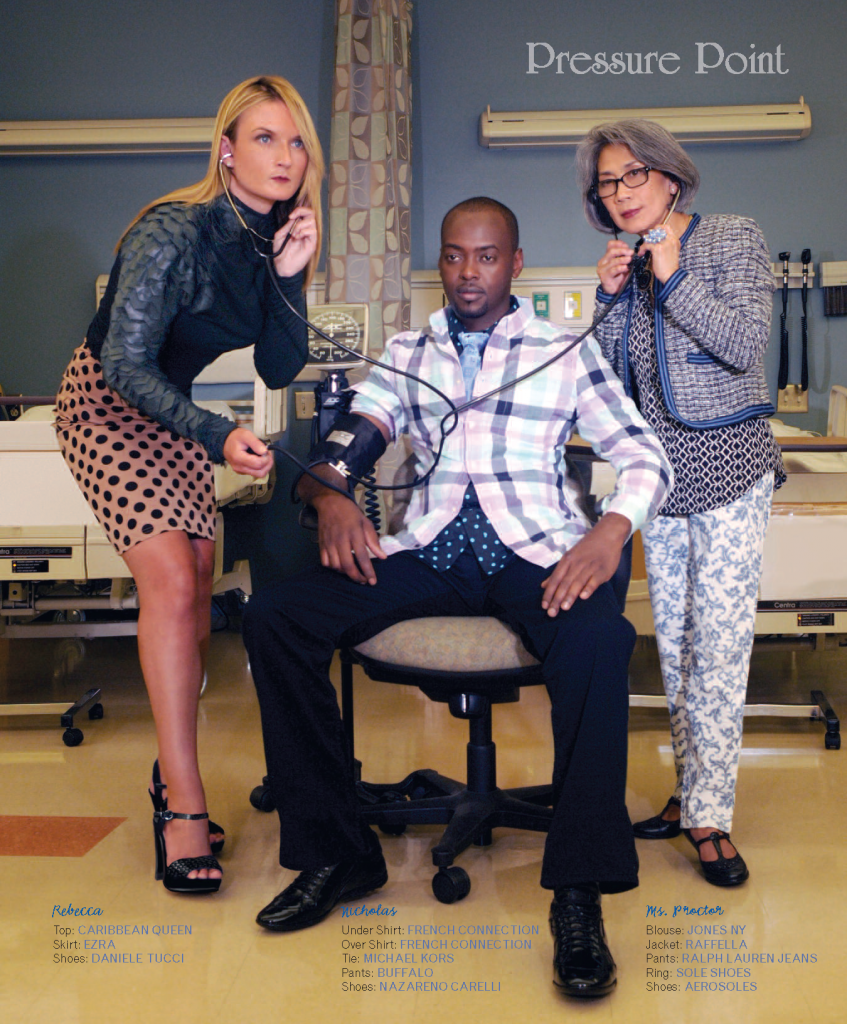
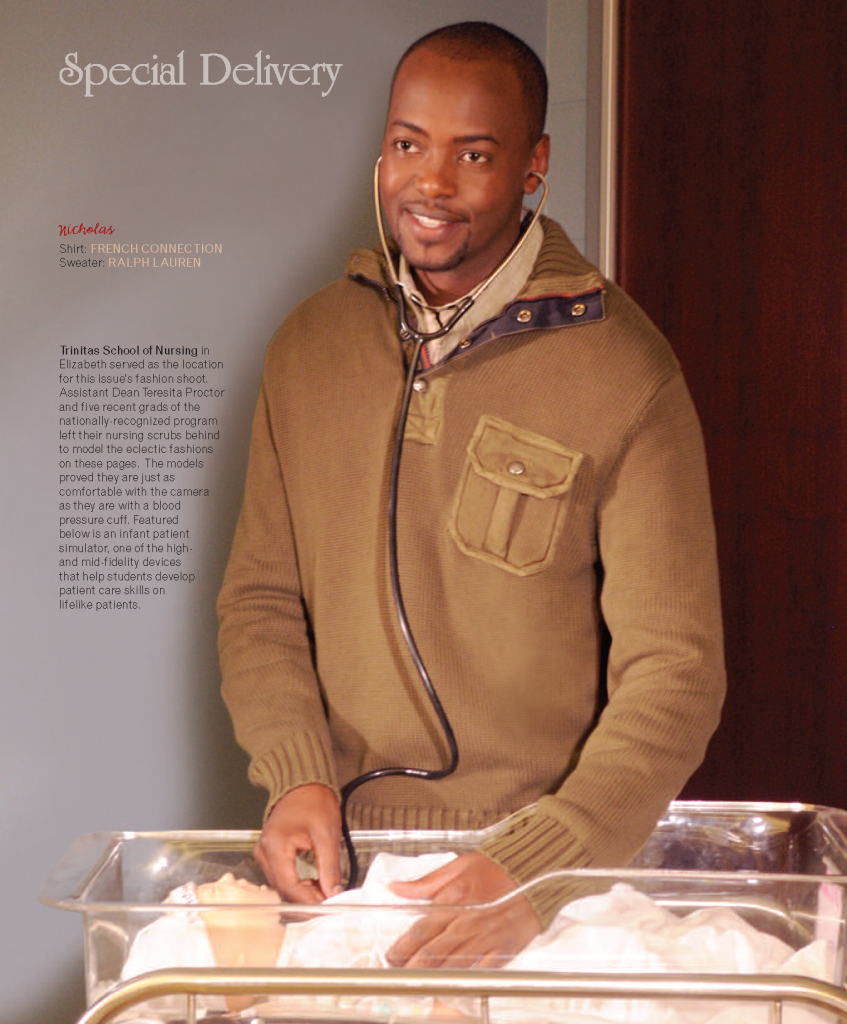


New Jersey has been good to Terence Winter. The Garden State furnished him with the inspiration and settings for two of the most iconic series in television history. Winter was a writer and executive producer for The Sopranos, and the creator of Boardwalk Empire. The Brooklyn born ex-lawyer sat down with EDGE Editor at Large Tracey Smith to talk about the two shows and their protagonists, reveal a nugget or two about the upcoming Boardwalk Empire season, and his upcoming film, The Wolf of Wall Street. What’s the key to writing a great series about crooks? Honesty…what else?
EDGE: Explain how you were able to transition so easily from The Sopranos to Boardwalk Empire?
TW: It might have looked easy but it wasn’t. There was a lot of research involved for Boardwalk that I didn’t need to do on The Sopranos. For example, on The Sopranos, because it was contemporary, I didn’t need to look up pop culture references, I knew the way people spoke, acted, and dressed. For the 1920s, it’s a whole different ball game. I needed to learn about World War I, I needed to learn about the Temperance Movement, I needed to learn about the year women got the right to vote—I needed to put myself in the mindset of characters who were born in the 19th century. So colloquialisms, what books did they read, what movies were out then required months and months of research before I was even able to begin to write the pilot. So even though they are a similar genre, and the characters cover some of the same territory psychologically, it’s almost a hundred years earlier, so the prep work was massive.
EDGE: One of the first things Tony said on The Sopranos was that he felt like he was coming in on the end of something. Steve Buscemi’s character in Boardwalk Empire, Nucky Thompson, is right there at the start of something.
TW: Right. Prohibition was the single event that made organized crime possible. That, more than anything else, was the impetus for criminals to start working together to make money. The interstate trafficking of alcohol made millionaires of criminals overnight, and enabled them to then infiltrate other businesses, and ultimately become organized throughout the country.
EDGE: How do Nucky and Tony compare as protagonists?
TW: In terms of their psychology, they both at their heart are depressed people, sort of searching for something that will make them happy. They are both very smart, both natural leaders, and both are ruthless. Tony’s fatal flaw is that he has a conscience. If he were more of a true sociopath, he wouldn’t pass out, wouldn’t have panic attacks, and wouldn’t care. Nucky, I think, is the same way. We’ve explored a little bit of the psychology of Nucky. We learn by the end of the first season that his wife lost a child very early on, and he is still haunted by that, and that he had a difficult relationship with his father. He’s trying to repair a broken childhood and to recreate a happy family life that he can’t quite seem to replicate.
EDGE: How did Steve become your Nucky?
TW: I’ve been a fan of Steve’s since a movie he did in the 90s called In the Soup. The moment I saw him I was just fascinated with this guy. I was lucky enough to get to know him when he directed a few episodes of The Sopranos that I wrote, and we became friends. Then, of course I got to work with him as an actor when he portrayed Tony’s cousin. I’ve seen everything that Steve’s ever done as an actor. I’ve seen him portray every possible color of human emotion, back and forth, every which way. So for me there was never a question of whether or not he could be convincing as Nucky. When we started to cast for the show, Martin Scorsese and I were talking about who is going to play the lead role. Our Nucky is based on a real person, Nucky Johnson. We fictionalized him as Nucky Thompson, so he’s a version of that person. But we realized since nobody really knew what the real Nucky looked like anyway, it didn’t really matter who we cast in terms of whether or not they looked similar. So Marty said, “Well, let’s just pick an actor that we both like. Who are people you want to work with?” I’m pretty sure it was me that said, “What about Steve Buscemi?” He jumped on it and said, “Oh my God, I love him.” About a week later, Marty called me up and said, “I can’t stop thinking about Steve Buscemi.” I told him I couldn’t either, and he said, “Let’s do it.” HBO was on board—their feeling was Wow, what an interesting choice. That was it. We were off to the races.
EDGE: Why didn’t you use Nucky’s real surname?
TW: I wanted the opportunity to take my Nucky into places where the real Nucky might not have gone. For example, I’m pretty certain the real Nucky didn’t kill anybody. I’m pretty certain he didn’t embrace gangsterism the way our Nucky does. Fictionalizing him gave me artistic latitude and allowed me to sleep at night.
EDGE: How difficult is it to develop so many characters simultaneously?
TW: It’s a massive juggling act. There’s a lot of plotting out, there’s a lot of characters on the show, we’ve got action taking place in several different cities—it’s a big, big, chessboard of characters. That’s the work that goes on in the Writer’s Room. It all starts with “What if?” If suchand- such happened, what would the result of that be? What’s the fallout from that? Where do we want to end up? I’ll come into the season and have a pretty good idea of where I want things to end by episode twelve, sort of like a roadmap. We’re gonna drive from New York to California—alright, well, how do we get there? Those are the story beats that bring us to various places, and it takes a lot of sitting around the table and talking and banging your head against the wall, and plotting, and figuring it out. Eventually, it all works, but it’s a big, big, juggling act.
EDGE: And now you have two new characters to blend in.
TW: Yes. Jeffrey Wright plays a character this season called Valentin Narcisse. He is a Doctor of Divinity who also happens to be the most powerful gangster in Harlem. He crosses paths with Nucky and Chalky in Atlantic City, and that is about as much as I can tell you at this point. If you know anything about Jeffrey and his work, he’s a phenomenal actor, just incredible. We were so thrilled to be able to work with him and have him on the show. The same with Ron Livingston. I’ve been a fan of Ron’s for years and years. He’s so versatile. His work on Band of Brothers, Office Space—I mean, he’s one of these actors that can do comedy, drama, anything in between. He becomes an acquaintance of Jillian Darmody’s, and has a really interesting storyline as well. I’m really excited about both of those guys.
EDGE: A lot of people were shocked when you killed off Jimmy Darmody at the end of season two, just as they were when Tony killed Christopher in The Sopranos. What’s involved in the decision that a major character has to go, especially a protégé?
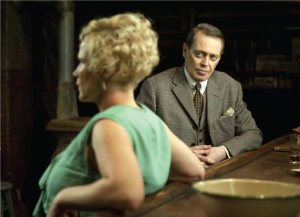
Photo courtesy of HBO
TW: First and foremost, I try to write the show truthfully. I try to avoid making decisions based on what would be the popular choice, what the audience would want me to do, what the conventions of television would be, which is: You don’t kill your second lead on the show, a beloved character. As season two was playing out, it became really clear to me that if we were going to tell this story honestly, Nucky would kill this guy…and he would kill him immediately. If I were watching this and he at the last minute changed his mind and Jimmy got off with a stern reprimand, I’d say, “This is not true, this is a TV show!”
EDGE: It is a TV show.
TW: But I want it to feel real. I think over 60 or 70 years of TV history, we’ve sort of lulled our audience into a sense of complacency. People say, “Oh, well, they’re obviously not gonna kill this guy, I know it looks like they are, but they won’t, because he’s one of the stars of the show. So, of course, people couldn’t believe when we did it, which made me even more certain I’d made the right decision. The louder the uproar, the louder the outcry, the more I was convinced we did the right thing.
EDGE: You have some interesting projects coming up with Leonardo di Caprio, Martin Scorsese and Bobby Cannavale.
TW: In November, Wolf of Wall Street opens. That’s, as you said, directed by Martin Scorsese and stars Leonardo di Caprio. It’s the true story of a stockbroker named Jordan Belfort who, in the 90’s, made tens of millions of dollars a year as the head of his own stockbrokerage firm. He found a way to sell very inexpensive stocks to rich people. He sort of cracked the code, and he and hundreds of young brokers working for him made a fortune. It was just an incredible roller coaster, a wild ride with incredible amounts of money and drugs. Leo is terrific in it and, of course, we’ve got the master, Martin Scorsese, directing. I’m also working on another series with Martin Scorsese for HBO, this one involving Mick Jagger. It’s set in the world of rock music in 1973 New York City, starring Bobby Cannavale as a cocaine-fueled, A&R executive for a record company. That was the year that punk, disco and hip hop were all invented in and around New York City, a time of great change, of great upheaval in the city. I’m really, really excited about that project. Hopefully, the pilot will be directed in the early part of next year, and we’ll go into series right after that.
EDGE: Cannavale was like a bull in a china shop on Boardwalk Empire.
TW: Oh yeah! There was nobody better to play the Gyp Rossetti role than Bobby. He was great. I think we had one conversation about who that character is and what motivated him, and Bobby got it immediately and ran with it and became Gyp Rosetti. It’s so funny, because nothing could be further from the real guy. Bobby is just the sweetest, funniest, most gentle person in real life, and as an actor he can sort of give you anything. He can turn into Gyp Rosetti on a dime and then go back to being himself again—it was pretty amazing to watch.
EDGE: How many more seasons?
TW: I would love to do seven seasons all together. We’re starting down the homestretch in season four; whether or not we’re fortunate enough to get to do them remains to be seen. It all really is going to depend on what the public’s appetite is for this show, and HBO’s, of course. I would love to do three more years, I think that could take us to the point in Nucky’s story, and the point in history that I’d like to get us to. Hopefully, we’ll get the chance to do that.
EDGE: Are you a nostalgic person?
TW: Very much so. I love history. I am the family’s historian. I’m the one who archived all of the family photos and films, the genealogy and all that stuff. I love the idea of leaving that behind for my children, and grandchildren, and their children. I’d give my left arm just to read about what my great-great-grandfather’s day was like. “What did you do, where did you go, who did you talk to?” That stuff is fascinating to me.
Editor’s Note: There are no short conversations once Tracey Smith gets you talking. For (a lot) more on Nucky, Chalky, Margaret, Richard and Van Alden—and the inside story on the brilliant “Pine Barrens” episode of The Sopranos—visit edgemagonline.com and read the rest of our Q&A with Terence Winter.
Five challenges facing New Jersey education

Photo credit: iStockphoto/Thinkstock
Most school administrators wouldn’t trade their job for anyone else’s. That being said, most wouldn’t wish their job on their worst enemy. Whether calling the shots in a public, private, faith-based or boarding school, the people who run New Jersey’s halls of education are engaged in a never-ending game of Whack-A-Mole: As soon as one problem is addressed, two more always seem to pop up. None of these problems, it is worth noting, is simple. Nor is much in the way of extra help available to deal with them. In fact, since the 1980s, the number of teachers in New Jersey has grown by nearly a third. The number of administrators during that time has gone up a mere two percent. New Jersey’s public schools handle about 1.4 million kids in a given year, and their budgets make up the largest state-funded operation.
Our students rank high nationally in reading, writing and arithmetic, and we have the best high-school graduation rate in the country. New Jersey’s private schools rank among the best in the nation, too. Even so, our schools—all of our schools—have had to face significant challenges in the early part of the 21st century. Some are obvious, like budgeting. Everyone could use more money, from language arts instructors to librarians to lunch ladies. At the same time, budget reformers are looking for creative ways to slash school budgets, which in some places are driving property taxes up so high that many residents can’t afford to stay in the towns they’ve lived in for generations. In these pages, we’ll veer off the beaten path a bit and look at five topics that you either don’t hear much about, or don’t think about too much when you do hear about them. All are on the daily schedule for school administrators, and present some of their most difficult challenges.
TEACHER PERFORMANCE This is an incredibly complex issue. Who are the best teachers? Are they the ones who consistently turn out superb test-takers? Are they the ones whose students come back to visit 10 and 20 years later? Are they the ones who take thankless jobs in the most troubled school systems? These questions are not only relevant from a quality-of-education standpoint. With more and more discussion about the creation of incentives for great teachers—and a mechanism for getting rid of some lousy ones—there will be a need for some quantifiable measurements. And those measurements will have to include metrics that take into account the challenges each educator faces in his or her classroom. That is why all eyes are focused on the Newark school system, which famously received a pile of Facebook stock from Mark Zuckerberg three years ago.
In the new contract negotiated with city teachers at the end of 2012, there is a provision for merit pay. Teachers rated as “highly effective” can now pocket $5,000 in bonus money, which comes right out of the Facebook fund. Teachers in the more troubled schools can earn even more, as can math and science teachers. Teachers rated as “effective” will receive an agreed-upon pay raise every year they maintain that standing. Newark’s teachers are represented by the American Federation of Teachers, which negotiated the bonus terms. Most public educators in the state are represented by the New Jersey Education Association, which to this point has stood firmly against a bonus scheme. Needless to say, the NJEA will come under pressure to consider teacher bonuses if the Newark experiment is a success. What does success look like? More money for outstanding teachers, a fair wage for competent ones, and perhaps a way to ease out chronic under-performers.
SECURITY In the wake of the New-town tragedy, every school in the state had to reexamine its readiness and vulnerability in emergency situations. The process was expensive, time-consuming and eye-opening. For a while, everyone was nattering about armed guards in the hallways and even armed teachers in the classrooms. It appears that cooler heads have prevailed. The fact of the matter is that armed intruders are incredibly rare; a far more likely emergency scenario is an out-of-control parent, power failure or dangerous weather event. The bad news is that most New Jersey schools lack adequate staff training on the procedures needed to deal with these emergencies. There is actually an Office of School Preparedness and Emergency Planning. As you might imagine, its inspectors have been very busy since the Sandy Hook shootings. Some of their visits are scheduled, while others are unannounced. The goal is not to “catch” public schools unprepared, but to make sure that they follow a set protocol for lock-downs and other safety drills. The state has always had relatively strict drill requirements, so it has been more of a fine-tuning process than an overhaul.
Private schools are a different matter. They tend to operate more openly to project a warm and welcoming feeling to current and prospective parents. Many of these schools have drop-off and pick-up “traditions” that they are reluctant to change, even when they might compromise security. In some schools, parents could slap a Visitor sticker on and roam the halls without attracting a second look. Well, this situation has changed dramatically in the last year. Parents who were once charmed by a feeling of openness have started looking at their schools with a more critical eye. As a result, most private schools—at considerable expense—have undergone security audits, and are now making substantial changes to their physical spaces, technology, and visitor policies. These changes have to be paid for. In some cases, schools will dip into their endowments. In others, there will be a noticeable bump in tuition.
HOMEWORK The point of homework is not just to educate students outside the classroom. It helps them develop time-management skills and teaches them lessons in accountability they will need to learn before moving on to college or into the workforce. The challenge public schools face is that students who will not (or cannot) complete their homework assignments fall behind the rest of the class. They become disinterested or disenchanted or disruptive. Over the course of a semester, depending on the school system, a teacher who is tough about homework is likely to find a large portion of the class far behind by the time final grades are given. In subjects where testing is used to measure a school’s success (and by extension, a teacher’s effectiveness), everyone loses. So what’s a teacher to do? In many instances, a large portion of class time is now devoted to getting homework done!
This is the only way to ensure that every student is on the same page. Unfortunately, this limits the amount of material that can be covered in class. It is also creating a generation of kids with a lot of un-monitored after-school time to kill, which isn’t necessarily a good thing. The challenge for private schools where homework is concerned often comes down to blow-back from parents about too much. Above 5th or 6th grades, most private schools have a policy limiting homework to no more than 15 to 30 minutes per subject. Of course, if three classes give a half-hour each, a project is due in a fourth class, and a student needs to study for a quiz or exam in a fifth class, the result can be a meltdown. And guess who deals with that? The parents…who are paying thousands of dollars a year (sometimes tens of thousands) in tuition. Many feel that this buys them the privilege of not having to crack the whip on homework assignments.

Photo credit: iStockphoto/Thinkstock
RECESS (aka GYM) Recess—or free time for physical activities—has long been a tradition in both public and private education. Researchers agree that its value includes the development of cognitive skills outside the classroom environment, including cooperation, teamwork and communication. Recess has also been shown to have a direct link to improved academic performance. And, of course, activity during the school day is one way of addressing the obesity issue. The problem is that the number of schools with a structured PE curriculum is shrinking—in some cases for budgetary or manpower reasons, in others because of liability concerns.
In schools that need to improve their measurable academic success, outdoor time has actually been cancelled to give students extra time to prep for tests. Those schools that continue to schedule recess or gym classes have in many cases devolved into little more than active socializing. Indeed, at some schools, “walking and talking” constitutes an adequate amount of physical activity. A recent study estimated that two in five schools have either eliminated recess or reduced it. In lower-income districts, the cuts have been even more dramatic. The situation has become so distressing that, this past year, Shirley Turner, a state senator representing portions of Mercer and Hunterdon Counties, introduced a bill requiring public schools to provide a daily recess period, but only through fifth grade.
BULLYING In the last five years, national attention has been focused on the issue of bullying in schools. It is on the rise nationwide, and in New Jersey, too. The rapid growth of social media has certainly added fuel to what was a smoldering fire. So, too, has the focus on confrontation in the reality shows that young people watch. Schools have combated this growing problem as best they can, including a stronger anti-bullying law that went into effect in New Jersey during the 2011–12 school year. That law compelled schools to designate an Anti-Bullying Coordinator, who must report every incident. Prior to the 2011 legislation, reports of school bullying had risen sharply, by 15 to 20%, over a three-year period, according to the state’s Department of Education. Critics of the new rule claimed that the stricter reporting requirement might send the bullying numbers soaring.
However, this doesn’t appear to be the case. In some districts, bullying incidents actually fell. In others they remained fairly consistent. In a few, they spiked. Who are the bullies? About a third of reported incidents involve seventh- and eighth-graders. A quarter occur among ninth- and tenth-graders. Fewer than 1 in 20 of these incidents was linked to racial or religious bias, so basically it’s kids being jerks. Some have posited that the rise in bullying may be linked to the punishment now meted out in public schools for physical violence. In the old days, standing up to a bully meant punching him in the mouth—or at least making yourself a hard target. Now that response would carry an automatic suspension. Others point out that if a bully is using social media as a weapon, a punch in the mouth isn’t even an option anymore. The notion that bullying is less of a problem in private schools may be accurate, but it is not supported by any hard numbers. Those institutions are not compelled to report bullying, and each sets its own policy. To be certain, bullying does occur in New Jersey’s private, faith-based and boarding schools. It may be more subtle or sophisticated, and some cases may involve influential families, so administrators must tread lightly before dropping the hammer on a bully.
Editor’s Note: What might this same article include a year from now? Some trends to keep an eye on are New Jersey’s adoption of national Common Core standards. New York adopted them recently and saw its test scores fall. It will also be interesting to watch the development of Governor Christie’s Regional Achievement Centers, which are meant to be a resource for teachers and parents, but thus far have been underutilized. And finally, a debate may be on the horizon regarding the skyrocketing costs of special education.
Of note to teachers and parents: TRMC’s Department of Behavioral Health & Psychiatry produced Step-Up, Take Action: When Does a Child Need Help? Log onto edgemagonline.com for a free PDF version in English or Spanish.
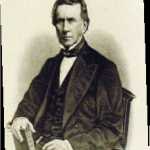
Abraham Browning Photo courtesy of NJ.gov
Why do our license plates say Garden State? Unless you are in law enforcement, it is doubtful that you spend a lot of time thinking about license plates. However, if you are 60 or younger, that slogan has probably been attached to every car you or your family has ever owned. At the time Garden State was added to our license plates in 1955, the term had been in use as an unofficial nickname for well over half a century. The characterization of New Jersey as a garden may not seem right to out-of-towners, but anyone who has spent any time here knows how incredibly productive the soil is in all but a couple of places. In the 1700s and 1800s, New Jersey served as the primary food source for two of the nation’s fastest-growing cities, New York and Philadelphia. Benjamin Franklin likened our state to a barrel of food, open at both ends, nourishing two major populations.
Legend has it that the term Garden State came into wide use after the 1876 Centennial Exposition in Philadelphia. During that event, Abraham Browning, New Jersey’s Attorney General in the years prior to the Civil War, gave a speech in which he described his home state as “an immense barrel filled with good things to eat and open at both ends—with Pennsylvanians grabbing from one end and the New Yorkers from the other.” It was during this speech that he supposedly dubbed New Jersey the Garden State. When the license plate bill was introduced in Trenton in 1954, Governor Robert Meyner decided to investigate the origin of the slogan and determined that at no time had it ever been recognized officially. Focused on promoting the state’s growing reputation as a business-friendly industrial player, Governor Meyner felt the word garden sounded too rural—and actually vetoed the bill! “I do not believe that the average citizen of New Jersey regards his state as more peculiarly identifiable with gardening for farming than any of its other industries or occupations,” he said. The legislature ignored him, overrode the veto, and early the next year the new license plates started arriving at Motor Vehicles.

Photo courtesy of Fabioj
Who came up with the Big Bang theory? If you were hoping to read about Leonard, Sheldon, Howard and Raj, skip to the next teachable moment. This Big Bang happened billions of years ago—and was “discovered” by Arno Penzias and Robert Wilson in 1965. The two radioastronomers, working at Bell Labs in Holmdel, were interested in measuring radio signals coming from space. They were given permission to use a satellite receiver (from an obsolete project called Echo), which was destined for the scrapheap. It just happened to be perfect for their experiments. As soon as Penzias and Wilson began, they noticed a static-y background signal in the microwave range.
Until they eliminated this mysterious noise, they could not continue with their work. The problem was complicated by the fact that, no matter where they pointed the receiver, they heard the same noise. They began ruling out various possibilities. It was not an extra-terrestrial radio signal. It had nothing to do with nearby New York City. An above-ground nuclear test was not the culprit either. It occurred to the scientists that perhaps the pigeons living in the antenna were creating the problem. They shooed them away and then swept out their poop themselves. Next, they turned to the work of others. In 1929, Edwin Hubble had shown that the galaxies we could see from earth seemed to be moving away from us. This suggested that the universe had been compacted at some point.
In England, astrophysicist Stephen Hawking and two colleagues were taking Albert Einstein’s Theory of General Relativity and trying to work backwards to measure time and space. The conclusion they drew was that time and space had a “beginning”—and that all matter and energy originated at that point. Closer by, in Princeton, Robert Dicke theorized that if such an origination point existed, then the residue of the “big bang” that created the universe would be evident in consistent, low-level background radiation anywhere you looked. What Dicke needed was evidence. After four frustrating seasons, Penzias and Wilson began reaching out to their colleagues. They contacted Dicke and presented their dilemma. Of course, he knew exactly what the noise was. Dicke shared his theoretical work, knowing he’d been “scooped.” The three scientists published their findings and in 1978, Penzias and Wilson received the Nobel Prize. One wonders if they could have imagined this outcome more than a decade earlier, while they were sweeping bird droppings off their receiver.
How did our bridges and tunnels get built? New Jerseyans don’t like it a bit when Manhattanites deride them as the “Bridge & Tunnel” crowd. But bridges and tunnels provide vital lifelines for urban dwellers and, lest we forget, they do not build themselves. In the case of the Holland Tunnel to New York and the Ben Franklin Bridge to Philadelphia, credit goes to the vision, political will and—surprise!—unbridled corruption of two of the state’s iconic influence-peddlers: Frank Hague and Enoch “Nucky” Johnson. Hague clawed his way to power in Hudson County beginning in the 1890s, rising from the job of Jersey City constable to ward boss to City Commissioner by 1913. During World War I, Hague filled a power vacuum and seized control of the state’s most populous and richest county.
He was elected Jersey City Mayor in 1917. Johnson, the inspiration for Nucky Thompson in the HBO series Boardwalk Empire, held a number of different official positions in Atlantic City. He ascended to role of political boss in 1911 after his predecessor was jailed. He quickly consolidated this position and held it for three decades. To stimulate business for his town, Johnson made sure that city officials looked the other way when it came to enforcing laws against gambling, prostitution and liquor. When Prohibition kicked in a few years later, Atlantic City became a Mecca of vice and Johnson’s take on this illicit business was hundreds of thousands of dollars a year. Between the two machine bosses, they controlled enough money and manpower in New Jersey to get almost anything done— or make almost anyone disappear. They first joined forces in 1916. Johnson was the campaign manager for Walter Evans Edge, a state senator from Atlantic County who had his eye on the White House.
The first step was to get him to the governor’s mansion. This would be tricky, as Edge was a Republican and Hague was a Democrat who controlled votes in the northern half of the state. Johnson (then 33) met with Hague (then 40) and suggested they forge a partnership that would serve both their ambitions going forward. Hague instructed his organizers to make sure Edge won the Republican primary, and then yanked his support from a stunned Democratic candidate Otto Wittpenn in the general election. With Edge running things in Trenton, Johnson’s power grew. The new governor rewarded him by making him Clerk of the State Supreme Court. He also pushed through laws that gave New Jersey’s cities more autonomy, which helped solidify Johnson and Hague as machine bosses. In 1917, Governor Edge “rewarded” Johnson and Hague by reorganizing the state highway department. This enabled him to authorize the construction of a bridge between South Jersey and Philadelphia (the Ben Franklin Bridge) and a tunnel between Jersey City and Manhattan (the Holland Tunnel).
The bridge opened in 1926 and the tunnel opened in 1927. Both projects transformed the cities that Johnson and Hague controlled. After 30 years, the law finally caught up with Johnson. For years, he had listed enormous amounts of income from gambling, prostitution and kickbacks on his tax return as “other contributions.” The IRS finally nailed him in 1941. Hague fared better during FDR’s administration. Indeed, the lion’s share of federal funds earmarked for New Jersey was put under Hague’s control, conspicuously bypassing the state’s senators or governors. Hague finally resigned as Jersey City Mayor when the new state constitution went in place in 1947.
It was rewritten largely to curtail the influence of local political bosses, and he knew it. Edge went on to enjoy a long and productive national and state political career, but never made it to the White House. He was the fron-trunner for vice president on Warren Harding’s ticket in 1920, but enemies he made with his wheeling and dealing in the Garden State blocked his candidacy, and Calvin Coolidge ended up as Harding’s running mate. Coolidge ascended to the presidency after Harding died in office. Who knows what New Jersey would look like today had Edge been president instead of Coolidge. One can only imagine the extent to which Frank and Nucky might have elevated their power.

Photo Courtesy of Twin Lights Historical Society
Where was the Pledge of Allegiance given for the first time? The Pledge of Allegiance was first published on September 8, 1892, in The Youth’s Companion, a children’s magazine that enjoyed wide circulation across the United States. On April 25, 1893, the Pledge was given for the first time as America’s official national oath of loyalty in a ceremony atop the Navesink Highlands, overlooking Sandy Hook. How the Pledge made this extraordinary journey in less than eight months is a story that is still not covered in most textbooks. The Pledge originated in the offices of The Youth’s Companion in Boston as part of a promotion to celebrate the 400th anniversary of Columbus discovering America.
The publisher’s nephew, James Upham, was in charge of marketing the publication. His goal was to sell flags through advertising that appeared on the magazine’s back pages. Knowing that schools did not typically have flags in their classrooms, he came up with the clever idea of having students recite a pledge of loyalty to the flag at the start of each school day. At a time when patriotism in America was on the rise, this seemed like a sure bet. The writer of the pledge was Francis Bellamy, a local Baptist minister and occasional contributor to the Companion. He may or may not have had editing help, but the final result was I pledge allegiance to my Flag and the Republic for which it stands, one nation indivisible, with liberty and justice for all. An ardent socialist, Bellamy had originally include the words equality and fraternity in the Pledge. It was decided that no one quite knew what fraternity meant (it was an expression held over from the French Revolution), and that equality might offend those who frowned upon the notion than women and African Americans might share in the advantages enjoyed by white males.
The Pledge of Allegiance immediately caught the attention of President Benjamin Harrison, who was running for reelection that fall. Harrison proclaimed that October 12 would now be Columbus Day, and ordered that the Pledge be recited in schools on that morning. It soon became a daily practice in many schools, and at various public events. Harrison ended up losing the election to Grover Cleveland (the nation’s only NJ-born president), but Cleveland continued to carry the ball on the Pledge. As the April 1893 opening of the Colombian Exposition in Chicago approached (it was a year late because of construction delays), it became clear to Cleveland and others in his administration that a “mirror event” somewhere on the East Coast would be necessary. A Newark businessman named William McDowell entered the picture at this time. On his various return trips from Europe via steamship, McDowell noted that the greatest commotion on board was not when the incoming immigrants passed that new statue, Liberty Enlightening the World, but upon the first sighting of the coastline. The first piece of America immigrants saw rising over the horizon on their way into New York Harbor was the Navesink Light Station, better know as the Twin Lights. McDowell believed there should be a flag atop the highlands, between the two lights, that was double their height.
Having already secured funds to erect this 135- foot Liberty Pole, he joined forces with The Youth’s Companion and government officials to hold a ceremony to make the Pledge of Allegiance “official” at the same time the Chicago World’s Fair was opening. On April 25th, several hundred local and national dignitaries gathered on a hastily constructed grandstand to witness the dedication of the Liberty Pole at the Twin Lights. It was a miserable, drizzly morning punctuated by several speeches and flag raisings. The Pledge of Allegiance was given for the first time as the official oath of loyalty. A flotilla of international warships fired salutes as it made its way north toward Sandy Hook. The following day, the ships were assembled for a naval review in New York Harbor, followed by parades and a couple of days of social events. Because Cleveland chose to bypass the flag-raising (he managed to make the parties in New York) and because almost every reporter of note in America was in Chicago to cover the Colombian Exposition, the day the Pledge became official never made it into the history books. The wording has changed a couple of times in the last 120 years, and the way we salute the flag has, too. One thing, however, remains the same—the Pledge of Allegiance is the symbolic final threshold every new American must cross before he or she becomes a U.S. citizen.
New ideas keep one of the nation’s oldest nursing schools on the cutting edge.
By Diane Alter
Every nurse has a story about the path he or she chooses. Most insist that nursing is not simply a career, but a calling. That calling may not come from an audible voice or divine sign from above.
Masters degrees. They come from myriad cultural backgrounds and from different parts of the region. But they all come for the same reason: to make a difference.
Not surprisingly, they follow the lead of the school’s Dean, Mary E. Kelley.
“I always knew I wanted to be a nurse,” she says. “There was never any question what I would do.”
Kelley not only embodies what it means to devote yourself to the profession, but where the profession can take you in a relatively short amount of time. Just eight years after graduating from Boston College School of Nursing—ready to dedicate herself to “devoted service for human welfare”—Kelley was named Dean of the Trinitas School of Nursing. “Things were different back then,” Kelley says, downplaying the accomplishment. “Yes, I was young. But I was ready for the responsibility.”
The Trinitas School of Nursing first opened its doors in 1891 as Elizabeth General Hospital and Dispensary School of Nursing. It went by several names over the ensuing years, before taking its current name in 2000 when Elizabeth General Medical Center and St. Elizabeth’s Hospital consolidated to form Trinitas Regional Medical Center. The school was accredited by the National League for Nursing in 1959 and, in 1971, formed a Cooperative Nursing Program with Union County College. This enables students to receive an Associate in Science along with the Diploma in Nursing. At this time, the school made a commitment to serve educationally disadvantaged students, non-traditional nursing candidates, and those looking to switch careers.
By the mid 1970’s, the school had opened the country’s first full-time evening division in a diploma program, enrolling many students who previously would not have been able to pursue nursing. The school launched an innovative weekend division in 1987. It was the first of its kind in the region and one of the first in the country. Students pursuing a career in nursing could now do so while maintaining full-time employment and seeing to the needs of their families during the week. The inaugural weekend class achieved an astounding 100% National Council Licensure Examination-RN passage rate. Since 1990, the school’s overall passage rate has averaged 97 percent.
“Our open access philosophy and our flexible day, night, weekend, part- and full-time classes enable many aspiring nursing students to realize their dream,” Kelley says proudly.
How does an old school stay current? With pioneering instruction. The Trinitas School of Nursing is one of the first in the country to integrate simulation technology into its curriculum. Its Learning/Simulation Center is equipped with state-of-the art equipment, which enables students to log critical hands-on experience. “We use patient simulators and program them with specific ailments,” Kelley explains. “One might be having a heart attack or appendicitis—we can even program a simulator to give birth. These lifelike kinds of situations provide invaluable experience, promote active learning and steer students toward their professional role as safe and capable nurses.”
In 2007, the school became the first in the U.S. at which every eligible faculty member had earned a Certified Nurse Educator credential from the National League for Nursing. In 2008, the League officially recognized the School of Nursing as a Center of Excellence in Nursing Education—the first school in the Garden State (and the first Cooperative Nursing Program in the country) to receive such recognition. Re-designation must be earned every three years through an arduous re-application process. In 2011, the school was awarded re-designation, confirming its high standards and consistent excellence. Kelley herself was recognized in 2011 when she was awarded the Unity Achievement Award from the Union County Human Relations Commission for her extra-ordinary contributions to the promotion of respect for human rights, human dignity and cultural diversity in Union County.
“The school’s success is not about me,” she is quick to point out. “It’s about a team of people with the same vision, goals and objectives. I definitely didn’t do this alone. I have a great staff. That’s how I get things done. I don’t take or want any credit. I couldn’t have gotten anything done by myself.”
Editor’s Note: Tough though it may be, nursing continues to grow in popularity as a career choice. Trinitas’s January 2013 class of 96 graduates (85 women and 11 men) was its largest ever. Anastasia Filonova, Jane Mone and Romina Tara received High Nursing Honors. For more information on Trinitas School of Nursing visit www.TrinitasSchoolofNursing.org or call (908) 659-5200.
As a loved one approaches a time when mental problems appear to be imminent, there is no real roadmap for how to prepare for that change. The person you once knew may not be there much longer. Roles suddenly have to be reversed—the person who once took care of you becomes the one in need of care. Do you send that parent or grandparent to a living facility? Do you rely on emergency room visits? Or do you play it by ear and shoulder the responsibility of potential round-the-clock care yourself?
There is no “right answer” to any of these questions. However, now there is an encouraging alternative when it comes to treating seniors suffering from mental deficiencies. The government-funded Statewide Clinical Outreach Program for the Elderly (aka S-COPE) provides a mental health outreach team that ensures crisis response and clinical follow-up to senior citizens aged 55 and up. According to Deborah L. Humphreys, a Licensed Clinical Social Worker in Elizabeth, the program gives nursing homes and other care centers a go-to resource before simply dropping the elderly off at emergency rooms.
The idea actually was first proposed by Trinitas Regional Medical Center in 2012, when Governor Christie’s administration was looking for a way to accomplish its goal of expanding community care programs across New Jersey. The proposal built off of the SCCAT (Statewide Clinical Consultation and Training) program, which brought care to adults with developmental disabilities. The Department of Behavioral Health and Psychiatry of Trinitas now manages the S-COPE program.
“S-COPE is a program that fills an important need in the local communities,” Humphreys explains. “The staff offers a great mix of education, care, and advocacy that improves the lives of seniors, as well as family and caregivers. It is the consultation and training that we highly value in helping us to meet the needs of seniors, as well as fulfilling the highest standards of care with expertise, dedication, creativity, and common sense.”
As Trinitas behavioral health professionals observed that people who took care of senior citizens with mental issues relied too much on ER drop-offs, they wanted to bring about a different choice for those with special needs.
S- COPE brings the care to the patients themselves and provides hands-on care to the afflicted. After obtaining approval from the Department of Human Services, Trinitas received $1.3 million in grants and was able to successfully move forward with the program. In S-COPE’s short history, this outreach program has been able to:
• Become fully operational in all 21 counties of New Jersey
• Helped four Facilities establish Behavior Response Teams
• Received 545 referrals from nursing facilities, screening centers, and in-patient units
• Provided more than 2,157 face-to-face and phone interventions in response to crisis situations
• Conducted more than 70 training sessions to facilities, seven regional trainings, and one annual conference to educate people on
S- COPE
A year has passed since S-COPE was created. By any measure, the program has been a triumph. The program continues to expand, and patients and care providers have given Trinitas a major thumbs-up for its commitment to making it work. Toni Loyas, for one, has nothing but great things to say about the program.
“My experience with S-COPE has been nothing but positive,” says the COO of Lincoln Park Care Center, a 24-hour skilled nursing care facility. “They have been extremely responsive. Training in behavioral techniques, dementia and severe persistent mental illness for older adults has been outstanding. They are very involved in helping our residents remain in their home. I would recommend this team to any facility.”
Though the S-COPE program represents important progress in a growing area of concern, there is still work to be done to fully understand mental illness, and responding to the needs of seniors suffering from dementia. Trinitas is compiling research from all of its findings to further fine-tune its methodology and training. One area of promise is increasing the presence of technology in the form of video conferencing with patients in order to bring immediate attention to those in need. Training has already begun at facilities all over New Jersey.
Editor’s Note: The first annual S-COPE Conference took place in March 2013. For more information on the S-COPE program, call 908-272-3606.
Old School Toys with an EDGE
By Christine Gibbs
IT’S A GAS
That odor coming from the basement could be the sweet smell of an MIT scholarship… if your kids are playing with the classic Chem C3000 Experiment Kit. Available at thamesandkosmos.com.
BLOCK PARTY
It’s elementary: building a better brain starts early with handmade Periodic Table Blocks. Available at uncommongoods.com.
 I GOT IT! I GOT IT!
I GOT IT! I GOT IT!
The ballplayer in your family will love the hand-rubbed and broken-in Shoeless Joe 1910 Fielder’s Glove. Available at handmadebaseballgloves.com.
 TURN THE BEAT AROUND
TURN THE BEAT AROUND
You can relive the disco era without all the polyester thanks to the Desktop Disco Ball, which is illuminated with a quartet of powerful LEDs. Available at scientificsonline.com.
 DESK JOB
DESK JOB
Go ahead and stick a tiny piece of gum under this painstakingly accurate miniature replica Shaker School Desk. Available at shakerworkswest.com.
4GB IS THE NEW 33 RPM
Break out the old LPs and the new laptop and let them play together with the retro-style USB Record Player. Available at urbanoutfitters.com.
HOT STUFF
Super-size your mind excursion with the 250-ounce LAVA brand lamp. Available at lampsplus.com.
HEAVY METAL
Nothing brings out the timeless beauty of a backyard paradise like a Retro Metal Garden Chair. Available at doitbest.com.
LAID BACK
The Nicole Ergonomic Recliner from Lafer of Brazil launches the 1940s-era Barcalounger firmly into the future. Available at leifpetersenfurniture.com.
I’LL HAVE 3.14159 SLICES PLEASE
Now your kids can simultaneously develop their slicing and geometry skills—as well as a sense of irony—thanks to the Pizza Pi Cutter. Available at coolstuffexpress.com.
In the realm of wines & spirits, Old School has a definition all its own.
By Andrea Clurfeld
The bottle stood before me, 3000ml emptied, the memories of a classic night with classy friends still percolating at full tilt. The evening technically had started a couple months before, with the acquisition of that XXL-size bottle of the 2010 Pepiere Muscadet Clisson. Once procured, I began thinking about what I would do with a bottle holding 20 glasses of one of the world’s finest-ever Muscadets. To be honest, the thoughts came quickly. Oysters, lots and lots of oysters. People on board who would appreciate the partnership of oysters and the wine born to drink with them. Simple. And it was—because something that resolutely traditional can be trusted without the need of flourish or frill.
It’s old school, and you don’t muck with old school.

Photo credit: iStockphoto/Thinkstock
COMFORTABLE & COMPELLING
Old school is indeed where reliable meets riveting. It’s the intersection of something at once comfortable and compelling. It’s always that way, that very same way. When I think about “old school” wines, I don’t think of the big guns of, say, California cabernet and Rioja in Spain, or first-growth Bordeaux, but of the umpteenth generation of a family grape farm in a back-roads part of France or Italy. I don’t think of state-of-the-art wine-tasting rooms, but of a woman in the dusky cellar of a small vineyard in the southern Rhone Valley shrugging when asked the stupidest tourist question of all time (“What’s your favorite wine?”) and responding politely (“That depends on what I’m eating.”)
I think of a Riesling from Ostertag in Alsace, France, when I’m craving Asian. A Prosecco from Italy’s peerless Bisson when a little something needs celebrating. A murky Malbec from Cahors in the way south of France when I’m headed for a supper of a meaty stew. They’re my classics, my go-to’s, my versions of old-school wines.
The Clisson falls into that category. I could frolic through descriptions of this particular wine from Pepiere, made by the masterful and grape-respectful Marc Ollivier in the southern part of the Muscadet appellation of the Loire Valley in France. (OK, I can’t resist: It’s ripe, and considerably richer, than its Loire peers in citrus fruit, fruit that darn near takes on a honeyed quality. Yet it manages to be crisp and sharp and mineral-strong, a study in balance.) But, truly, like my favorite Ostertags—like my other personally anointed classics—it’s most significantly about heritage, a purist master, M. Ollivier, plucking grapes for his Clissons from vines ranging from 60 years old to 90 years old and following only traditional farming and vinification methods start to finish. Nothing in the lineage quits, not grape, not method, not winemaker.
 COCKTAIL HOUR
COCKTAIL HOUR
If you’re a cocktail maven, you may feel the same way I do about your drink of choice. You’re not particularly impressed with the try-anything-every-way current cocktail-crafting school of thought. There’s something rather unassailable about a perfectly made Manhattan that needs only the best ingredients and a barkeep who understands proportion, balance.
That’s not to dismiss the rage for cocktails concocted of the most meticulously made spirits, cooled as appropriate only by solid-block ice, and garnished with accents both organic and obscure. They’re admirable and often delicious. They’re just not old school. That old school is embodied by something the Father of American Gastronomy himself, James Beard, who advised in his seminal James Beard’s Menus for Entertaining (recounted in the more recent A History of Food in 100 Recipes by William Sitwell) that a “large cocktail crush for 40” start about 6 or 7 o’clock, proceed to 8:30 or 9, and include both “enough food so people do not need to go to dinner,” a “full bar,” “some champagne” and “white wine with cassis.”
“A small elegant cocktail party for 10,” to be given in honor of a “friend who loves the elegant things in life or a visiting mogul,” would sport nothing less than chilled champagne and vodka meant to accompany “caviar, smoked salmon, foie gras.” The epitome of old school, heh?
Or perhaps something in between? Say for 20 or 30? Go with hearty fare, advises Beard the party bard, served astride a variety of drinks, plus “beer, champagne and chilled dry sherry.”
 SHERRY?
SHERRY?
Yes, sherry. Now that’s an old school fundamental hardly reserved for female detectives of advanced age (and experience) conjured by Agatha Christie. Sherry isn’t just for sweetening a pot of stewing mushrooms or spiking soup, but most apropos as a segue from day to evening and/or from dinner to a little night reading. I’ve long admired the line from Lustau and the way Spaniards serve an impressive range of dry sherries with an equally impressive range of jamon, the cured porks of Spain.
 Feeling inspired to go old school? You don’t have to invest in a mint’s worth of single-malt Scotches. (Though checking out some small-batch Bourbons with proper pedigrees will add to your education.) You can ponder life’s most serious questions over a spot of Port (the value-priced Fonseca Bin 27 will do, and nicely) or toast the night to come with a Bordeaux wine glass filled with Lillet on the rocks, served with a twist of orange peel or a squirt of fresh lime juice. The aperitif from western France charms with its mysterious mix of wine, fruit and herbs—and it is mysterious, since the folks at Lillet long have refused to divulge the recipe. You can plow through Sitwell’s 1,000-page tome fortified by one of those acquired-taste spirits, Campari, Pernod or Aperol. You can even make a martini, as long as you follow the rules of cocktail crafting set down in the Jazz Age.
Feeling inspired to go old school? You don’t have to invest in a mint’s worth of single-malt Scotches. (Though checking out some small-batch Bourbons with proper pedigrees will add to your education.) You can ponder life’s most serious questions over a spot of Port (the value-priced Fonseca Bin 27 will do, and nicely) or toast the night to come with a Bordeaux wine glass filled with Lillet on the rocks, served with a twist of orange peel or a squirt of fresh lime juice. The aperitif from western France charms with its mysterious mix of wine, fruit and herbs—and it is mysterious, since the folks at Lillet long have refused to divulge the recipe. You can plow through Sitwell’s 1,000-page tome fortified by one of those acquired-taste spirits, Campari, Pernod or Aperol. You can even make a martini, as long as you follow the rules of cocktail crafting set down in the Jazz Age.
Or you can do as I did, and track down a super-size bottle of a wine for the ages—a classic such as the Clisson that allows you to pour freely for your very best friends. Because, after all, Old School imbibing means effort happens behind the scenes so the entertaining is easy.
Editor’s Note: Andy Clurfeld is a former editor of Zagat New Jersey. The longtime food critic for the Asbury Park Press also has been published in Gourmet, Saveur and Town & Country, and on epicurious.com. Her post-Sandy stories for NBCNewYork.com rank among the finest media reporting on the superstorm’s aftermath and recovery.
What you don’t see on TV can hurt you.
By Chris Myer
I would love to tell you there is a science to buying storage units. But I would be lying. I would love to tell you that it is easy money. The truth is it’s hard work. I have been buying at storage auctions for the past 12 years and averaging three a week. The storage biz colorfully augments the more predictable means of buying merchandise (estates, regular auctions, and house calls) for my retail store. For every ten units I see I might be tempted to bid on one. Sometimes I win it and sometimes I don’t. Sometimes I walk away with treasure. Sometimes I haul away trash. On most days it’s a combination of both.
Most lockers look bad when the lock comes off and the door goes up. However, every once in a while I see a unit with some antiques or at least a little character. When you see a unit on TV being viewed, you can’t really judge it. You can only “read it”—to the extent you can read it—in person.
The fact is that anything is liable to come out of a storage locker. Basically, though, what you find is boring “Made in China” junk. Despite what you see on the TV shows, there’s not much glamour to this business…and plenty of pitfalls. Abandoned storage units, or rather their contents, are a reflection of our consumer-driven society. When you have seen what I have seen, you realize we are binging on trash: cheap furniture, cheap decorations, cheap household goods, cheap everything. If people could comprehend the sheer volume of poorly made, mostly imported junk, they would be appalled.
My wife, Rose, and I own an antique center that also sells used items that are valuable or interesting (some not necessarily antique). My primary focus at auctions is the unit that may have older items, or things of good quality. When I see clues that tell me a room may have collectibles or other items of interest, I’ll get in on the bidding. However, there are no guarantees. Often a room that looks promising just doesn’t pan out. Over time, you do develop a feel and a set of rules that give you a slight edge.
 THE BIG SCORE
THE BIG SCORE
I’ve had some great finds, of course. The best was probably three units that belonged to a New York City ephemera dealer. I went in with a partner (sales are cash-only so it is not usual for bidders to join forces to buy an expensive unit). We could see it looked interesting, but couldn’t see beyond the plastic tubs and boxes. Well, it turned out to be a treasure trove. We sold just the postcard collection immediately and made three times our cost. It turns out this person was a very advanced collector and dealer. He had great stuff. The thing you want to find—and what shows up with some regularity—is a locker containing jewelry or coins. And, of course, cash is always good. I’ve only found a couple of hundred dollars in a locker, but I know instances where several thousand have been discovered in storage.
 Back in July, I bought a small, scruffy room that didn’t look like much, but I saw an oriental rug so I bid on it and won. In the back there were some boxes of collectibles—coins, a little jewelry, military items, fountain pens. Back in my office, I was looking through these boxes and there was an odd-looking pen. I played with it a bit to get it open and when I clicked the cap it went BANG. It was a pen gun, like something out of a James Bond movie! Luckily, there was no projectile, but I got a powder burn on my finger. I’m lucky I wasn’t pointing it at my face.
Back in July, I bought a small, scruffy room that didn’t look like much, but I saw an oriental rug so I bid on it and won. In the back there were some boxes of collectibles—coins, a little jewelry, military items, fountain pens. Back in my office, I was looking through these boxes and there was an odd-looking pen. I played with it a bit to get it open and when I clicked the cap it went BANG. It was a pen gun, like something out of a James Bond movie! Luckily, there was no projectile, but I got a powder burn on my finger. I’m lucky I wasn’t pointing it at my face.
There is actually a lot of danger in storage units. You get more cuts, abrasions and things falling on you than you can imagine. There can be something really heavy stacked high that can drop on your head. Hazardous materials can turn up, too, and you need to know how to properly deal with them.
GETTING PERSONAL
As a buyer of storage units, I try to look past the fact that this is someone’s life packed into a 10-by-10 space. It’s not easy. Many times, we’ll see a person pay his bill just before the auction begins. And yes, people who owe a lot of money on a room sometimes show up and try to buy it for less than they owe. Most facilities won’t allow them on the premises, but there isn’t anything to stop them from sending in a proxy to do their bidding. I like to steer clear of units where I sense that the owner still wants it or needs something out of it. I much prefer to bid on rooms that have clearly been abandoned. And anything that looks like an item of personal value or significance, I will box up and leave with the manager.
By the way, the personal stuff can be extremely personal. It’s a voyeur’s dream. Each unit truly is a person’s life. There are typically boxes of bills and papers, diplomas, photos, very often wills, gift cards. I can’t count the number of photo albums that were meticulously assembled and cared for, only to be abandoned. I also can’t count the numbers of strange and alarming things I’ve uncovered. Name America’s weirdest fetishes and insecurities and you’ll find them in storage units. This is not a business for people with weak stomachs, but it is fascinating. What do I find in almost every unit I buy? Self-improvement books. Religious items. And pornography. And way more often than you’d guess, I find all three!
COLD SWEAT
Is there a locker I got so badly burned on that I still wake up in a cold sweat thinking about it? Yes, but it’s not the money that makes a locker a bust, it’s the work. If you make a mistake and blow a thousand bucks on a small room, you’ll make some of that money back and then move on. But if you blow that thousand on a big, bulky room where it takes a week of moving and packing and multiple trips to the dump, it’s a truly miserable task. That’s actually what drives most people out of this business.  They don’t realize the logistics can be very difficult. And no matter how much stuff you think is in a room, there’s always a lot more once you start going through it. Much more. It’s as if it grows.
They don’t realize the logistics can be very difficult. And no matter how much stuff you think is in a room, there’s always a lot more once you start going through it. Much more. It’s as if it grows.
BUYERS BEWARE
Who shows up at storage auctions? Most of the people who buy lockers for a living are doing flea markets. Darrell on Storage Wars is a good example. He does the big outdoor swap meets in California. Others, like Jarrod and Brandi, are buying for thrift shops. A lot of people at auctions, you get the sense they’re just goofing around, like Barry and those two twins on Storage Wars. I actually prefer New York Storage Wars because it’s a little more realistic. I’ve been on that show—I was relegated to an under-bidder’s role. They pick out the lockers they want to film, they shoot the bidding as it happens, and then they “re-shoot” it so they can do cutaway shots of different bidders.
Needless to say, the storage-auction TV shows have spawned a whole group of newbies who turn up at sales and throw money around. Most come and go. They try it for a while and are driven out by the more hardcore buyers who better understand the complexities of the business. What newcomers discover very quickly is that there are no shortcuts. Plus, many only have a couple thousand bucks to play with—if they buy a unit where they can’t get the money back quickly, they’re essentially out of business.
People watch these shows and think, Maybe I’ll buy a few lockers, see what I get and then decide if this is a business I want to be in. That would be very tough. You’re going to end up with tons of clothing and household items, pots and pans and such, so the likelihood is that the business you’d start would be a flea market business. Is that a business you want to jump into because you saw a show on television? When I get these things in a locker, I channel them to the flea market dealers. In return, maybe down the road they’ll help me clean out a tough room. Not to disparage the flea market guys. You can grind out some decent money setting up at flea markets if you are really committed. But that’s not my thing.
If you do decide to get into the storage locker business, I think I can offer some guidelines without divulging any deep, dark secrets. Stay away from rooms with a lot of plastic toys and tubs with Christmas and Halloween decorations. As particular as I try to be, I’m not infallible. I still end up with gobs of this stuff. For obvious reasons, you should look for sales in wealthier areas. However, you don’t want to travel too far, because if you have to make multiple trips to move the items, your profit disappears with the time and money that you waste.
I try to get a vibration from what I can see in a locker. I look for clues that actually help me picture the person who rented it, and that in turn helps me guess at what’s hidden inside. All of this should be common sense. If you’re looking for an edge, it’s going to come from limiting your mistakes and understanding how to sell what you buy—not any brilliant secret strategy.
The distinct edge that I have is that I’ve developed a network of people that enables me to move merchandise that is not appropriate for the antique center. So if something specific is exposed when the door goes up on a unit, I will recognize its value and know how to turn it over. Another edge I have is that I am known as the guy who buys antiques and collectible items. So if a flea market dealer buys a unit and finds high-end merchandise, he will often call me and I end up buying it from him. So, in a sense, I am able to “cover” a lot of sales without having to physically be there. Also, I should mention that, because I buy a good deal of merchandise from these storage auctions, we are able to pass on some pretty amazing savings to our customers at the store, not just on antiques and collectibles, but also quality dressers, coffee tables, garden urns, stemware, china, and so on.
The people who make the best use of storage lockers are those who run businesses out of them. Contractors, electricians, trades-people—they actually make those units pay. The people who should not be using storage units are the ones who put all of their family items in there and then pack them so tight that they can never actually get at them without unpacking everything. They become stymied. They have to keep paying on a unit that is essentially useless. Again and again, I see units where people have been using the first foot or two, and never touched 95 percent of their stuff because they could no longer get in there.
I honestly believe that most people who store stuff shouldn’t be storing it. They should get rid of it one way or another. Donate it. Repurpose it. Throw it away. Otherwise they will pay many times what the contents are worth and derive no benefit. A lot of units with a value of a few hundred dollars have been there for five or six years, meaning the owners have paid thousands and thousands of dollars. Finally, they just gave up.
 Editor’s Note: Chris Myer and his wife, Rose, own and operate the Shore Antique Center in Allenhurst with help from their son, Stephen James.
Editor’s Note: Chris Myer and his wife, Rose, own and operate the Shore Antique Center in Allenhurst with help from their son, Stephen James.
“The entrées are unquestionably the stars at the Black Horse.”
By Michelle Ali and Nicholas Brooks
The Black Horse Tavern & Pub
1 West Main Street • Mendham NJ • 07945
973.543.7300 • BlackHorseNJ.com
The tavern is open for dinner Tuesday through Sunday. The restaurant features an extensive wine list, a popular prix fixe menu on Tuesdays from 5:00 to 7:00, and two rooms for private parties that can accommodate up to 125 people.
Mention the idea of “Old School Dining” to a New Jersey foodie and you may not elicit the intended response. Visions of grease-encrusted diners, timeworn seafood joints and, let’s face it, (the really old-school) Medieval Times are likely to come to mind. This story is about something a little loftier—and a lot older—the Black Horse Tavern in Mendham. Originally a stagecoach stop, the Black Horse has been serving New Jerseyans since the 1740s, making it by most measures the state’s oldest restaurant.
Which is not to say there is anything “old” about the menu. On the contrary, since the arrival of its young executive chef and general manager, Kevin Felice, the Black Horse has struck a balance that appeals equally to its well-heeled local clientele and those with more intrepid and adventurous tastes. The focus of the approachable, understandable menu is farm-to-table sustainability; the high-quality meat, poultry and fish are surrounded by fresh, seasonal ingredients.
Indeed, Felice makes great use of the 10 farms within five minutes of his kitchen. That kitchen features a slow-cook rotisserie which he has put to use in a number of imaginative ways (including producing its own bacon). It should be noted that the Black Horse Tavern is famous for its roast beef, mac & cheese and other homey menu items. We worked our way through the appetizers and entrées with an eye toward the freshest, healthiest options, the most intriguing combination of ingredients, and eye-catching preparations.
For starters, the standouts included an Arugula Ricotta Salad and Crispy Crab Cake. The salad earned high marks for taste, nutritional value and a clean, modern presentation. The arugula really popped, sugar-snap peas added a touch of crisp sweetness, and the salad itself was well-seasoned. If you are watching your calories, ask for the dressing on the side; we would have stopped the pour a bit sooner. Ask the server to make sure there is plenty of ricotta. It was delicious. The crab cake was the best-executed appetizer on the menu. It was not overly salty, and the accompanying fennel and dill salad was a great addition to the dish, which balanced many flavors. A good portion of lump crab and very little filler let the seafood do the talking.

Photo by Brett Wilshe
The entrées are unquestionably the stars at the Black Horse. The Smoked Bone-In Pork Chop had a wonderful level of smoke without being the least bit dry. The cut and presentation was smart and whimsical, and the mustard and cherry chutney went very well with the dish. It was nice to find a large pork chop that was well-seasoned and smoked, and the chef did a superb job of ensuring that each bite was moist and juicy.
The Farm-Raised Seared Salmon was presented beautifully. Everyone has their own preference regarding the doneness of fish; we would have liked our salmon taken off the heat a minute sooner. We thought the accompanying herbed quinoa was extraordinary—nutty and perfectly cooked, with a lovely hint of basil oil. The Myers Organic Filet may be the best quality steak you’ve ever had. Seasoned with coarse salt to coax out and heighten every molecule of flavor, it literally melts in the mouth. Order this anything above medium rare and you should be led away in handcuffs.
Having been tipped off in advance that everything on the dessert menu is made on premises, we saved room for the Key Lime Pie, Blackout Devil’s Food Cake and Blueberry Lavender Ice Cream. The custard had tremendous texture and flavor, with a burst of lime in every bite—you can tell fresh lime juice was used. The crust had a rich, buttery flavor but there was disagreement at the table on whether it should have had more crunch.

Photo by Brett Wilshe
We also disagreed on which dessert was our favorite. All were superb. The chocolate cake was not overly sweet and very moist. It was decadent enough to live up to its name. The ice cream was smooth, rich and full of blueberry flavor, with the little tweak of lavender with each spoonful. We guessed there was a hint of clove in the recipe, which the chef later confirmed. If you are looking for a guilt-free finishing touch to a meal at the Black Horse Tavern, the antioxidant properties of this dessert make it the hands-down best choice. In fact, go ahead and order a second scoop!

Michelle Ali

Nicholas Brooks
Editor’s Note: We asked EDGE’s regular food reviewer, Andy Clurfeld, to work on an Old School-themed wine and spirits story for this issue. Into the breach stepped Michelle Ali and Nicholas Brooks. Michelle is the Director of Food and Nutrition Services for Trinitas. Nicholas is TRMC’s Executive Chef. Together, they have re-invented the concept we used to call “hospital food.” Michelle, it should be noted, does not eat meat, so Nicholas handled that part of the menu.




